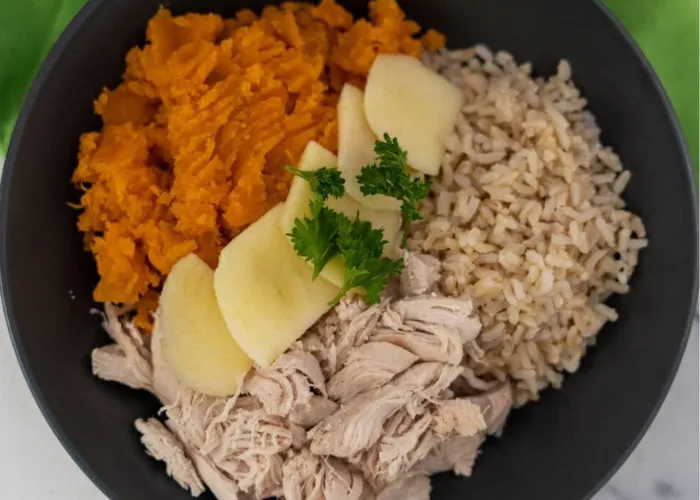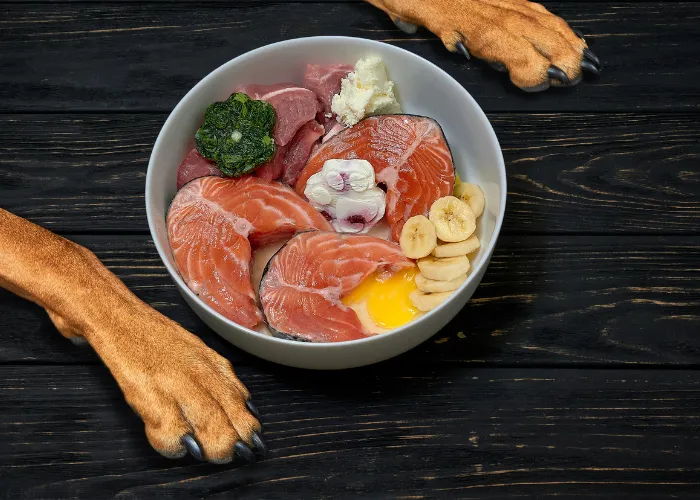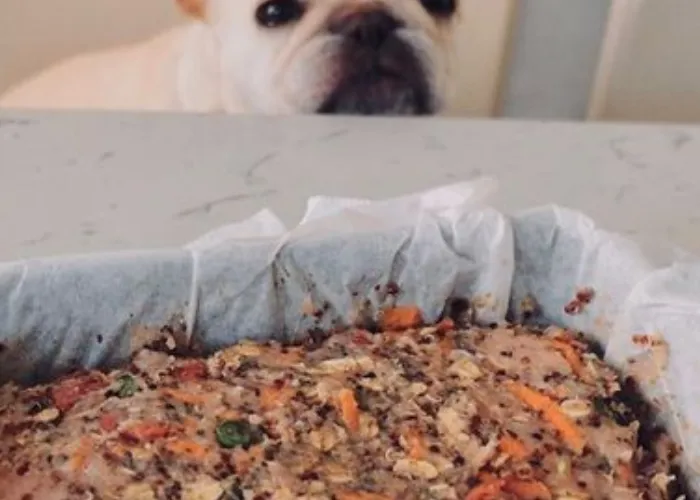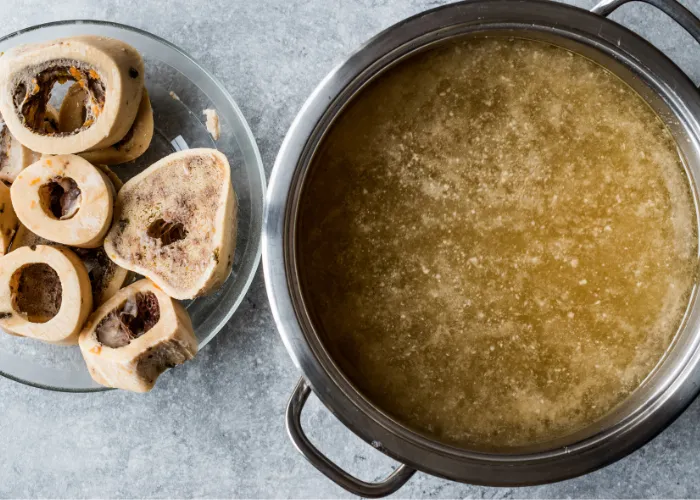Is your beloved canine companion constantly scratching, suffering from hair loss, or dealing with persistent itchy skin? These discomforting symptoms are often tell-tale signs of allergies or general skin sensitivities. Shifting to a homemade dog food diet can be a game-changer, allowing you to tailor meals precisely to your dog’s unique needs and alleviate these issues, fostering healthier skin and a happier pup. In this comprehensive guide, we’ll delve into the common causes and indicators of sensitive skin and allergies in dogs, highlight the myriad benefits of preparing fresh meals at home, present a selection of top-rated recipes, and provide crucial advice for a smooth transition to a homemade diet. This approach can significantly reduce common ailments such as hot spots, ear infections, and flea allergy dermatitis.
The recipes provided below are general guidelines. Remember, dogs typically require food equivalent to approximately 2% of their body weight daily, and these recipes should be adjusted to meet your dog’s specific dietary requirements and caloric needs. For a general portion size, aim for about 1/2 cup of food for every 10 lbs of your dog’s body weight. When considering dietary components for your sensitive pup, understanding what vegetables can American bullies eat can also be beneficial in crafting a balanced and healthy meal plan, ensuring they receive essential nutrients while avoiding potential irritants.
Understanding the Causes and Identification of Sensitive Skin and Allergies in Dogs
Sensitive skin and allergic reactions in dogs can stem from a variety of sources, ranging from dietary intolerances to environmental triggers. Common culprits include specific food proteins, flea saliva, dust mites, pollen, and even certain grooming products. Identifying the exact allergen is crucial for effectively managing your dog’s condition and reducing their discomfort. Key symptoms to watch for include incessant scratching, visible hair loss, recurring skin infections, and frequent ear infections. Beyond dietary adjustments, incorporating soothing grooming products, such as specialized hypoallergenic shampoos or topical sprays, and making environmental changes like regular vacuuming can also significantly help in alleviating itchiness and allergic flare-ups.
Essential Nutrients for Dogs with Sensitive Skin and Allergies
When formulating homemade dog food recipes for dogs with allergies or sensitive skin, focusing on key nutrients that promote dermatological health and mitigate allergic responses is paramount. These vital components include:
- Omega-3 Fatty Acids: Abundant in fish (like salmon) and flaxseed, these powerful anti-inflammatory agents help reduce skin irritation and improve coat quality.
- Antioxidants: Found in a variety of fruits and vegetables, antioxidants combat cellular damage and bolster the immune system, which is crucial for fighting off allergic reactions.
- Lean Proteins: Sources such as turkey, venison, lamb, and certain fish are often less allergenic than common proteins like chicken or beef for sensitive dogs. These provide essential amino acids for muscle and tissue repair.
- Soluble Fibers: Ingredients like pumpkin or sweet potatoes aid digestion, promote a healthy gut microbiome, and can help reduce inflammatory responses throughout the body, including the skin.
The Benefits of Homemade Dog Food for Sensitive Skin and Allergies
Switching to homemade dog food offers numerous advantages, particularly for dogs grappling with allergies and sensitive skin. One of the primary benefits is the ability to precisely control every ingredient, eliminating potential allergens commonly found in commercial dog foods. This customization allows you to create meals specifically tailored to your dog’s unique needs, incorporating soothing ingredients like sweet potato, known for its anti-inflammatory properties. Homemade diets also support a robust immune system, which is vital for reducing allergic reactions and potentially lessening the reliance on allergy shots or medications that often come with unwanted side effects.
Top 10 Homemade Dog Food Recipes for Sensitive Skin:
Here are ten nourishing homemade recipes designed to support dogs with sensitive skin and allergies. These recipes focus on wholesome, easily digestible ingredients.
1. Turkey and Sweet Potato Delight
 Cooked ground turkey and mashed sweet potatoes with peas, mixed in a bowl
Cooked ground turkey and mashed sweet potatoes with peas, mixed in a bowl
Makes 2 cups of food.
Ingredients:
- 1 cup cooked and ground turkey
- 1/2 cup mashed sweet potatoes
- 1/4 cup cooked peas
- 1 tablespoon olive oil
Instructions:
- In a bowl, combine the cooked and ground turkey, mashed sweet potatoes, and cooked peas.
- Drizzle the olive oil over the mixture and mix thoroughly until all ingredients are well incorporated.
- Serve the meal to your dog, ensuring it is at an appropriate, lukewarm temperature.
2. Salmon and Quinoa Medley
 Flaked salmon and quinoa mixed with chopped carrots and green beans in a serving dish
Flaked salmon and quinoa mixed with chopped carrots and green beans in a serving dish
Makes 2 cups of food.
Ingredients:
- 1/2 cup cooked salmon, flaked
- 1/2 cup cooked quinoa
- 1/4 cup steamed carrots, chopped
- 1/4 cup steamed green beans, chopped
Instructions:
- In a bowl, combine the cooked salmon, cooked quinoa, steamed carrots, and steamed green beans.
- Mix the ingredients thoroughly until well combined, ensuring an even distribution of all components.
- Allow the meal to cool completely before serving it to your dog to prevent burns.
3. Beef and Pumpkin Stew
 Hearty beef stew with pumpkin, brown rice, and spinach served in a dog bowl
Hearty beef stew with pumpkin, brown rice, and spinach served in a dog bowl
Makes 1 1/4 cups of food.
Ingredients:
- 1/2 cup cooked and ground beef
- 1/4 cup pureed pumpkin
- 1/4 cup cooked brown rice
- 1/4 cup chopped spinach
Instructions:
- In a saucepan, combine the cooked and ground beef, pureed pumpkin, cooked brown rice, and chopped spinach.
- Heat the mixture over low heat, stirring occasionally, until it is thoroughly warmed through.
- Let the stew cool down to a safe temperature before serving it to your dog.
4. Chicken and Rice Casserole
Makes 1 1/4 cups of food.
Ingredients:
- 1/2 cup cooked and shredded chicken
- 1/4 cup cooked white rice
- 1/4 cup steamed broccoli, chopped
- 1/4 cup grated carrots
Instructions:
- Preheat the oven to 350°F (175°C).
- In a baking dish, combine the cooked and shredded chicken, cooked white rice, steamed broccoli, and grated carrots.
- Mix the ingredients well to ensure even distribution and spread them evenly in the baking dish.
- Bake the casserole for approximately 20 minutes or until heated through and lightly golden.
- Allow it to cool to a safe temperature before serving it to your dog.
5. Lamb and Lentil Stew
Makes 1 1/4 cups of food.
Ingredients:
- 1/2 cup cooked and ground lamb
- 1/4 cup cooked lentils
- 1/4 cup pureed sweet potatoes
- 1/4 cup chopped zucchini
Instructions:
- In a saucepan, combine the cooked and ground lamb, cooked lentils, pureed sweet potatoes, and chopped zucchini.
- Heat the mixture over low heat, stirring occasionally, until it is warmed through.
- Let the stew cool down completely before serving it to your dog.
6. Venison and Sweet Pea Blend
 Cooked venison, sweet peas, and quinoa mixed in a bowl, drizzled with coconut oil
Cooked venison, sweet peas, and quinoa mixed in a bowl, drizzled with coconut oil
Makes 1 cup of food.
Ingredients:
- 1/2 cup cooked and diced venison
- 1/4 cup cooked sweet peas
- 1/4 cup cooked quinoa
- 1 tablespoon coconut oil
Instructions:
- In a bowl, combine the cooked and diced venison, cooked sweet peas, cooked quinoa, and coconut oil.
- Mix the ingredients thoroughly until well combined, ensuring the oil is evenly distributed.
- Allow the blend to cool before serving it to your dog.
7. Whitefish and Carrot Mix
Makes 1 cup of food.
Ingredients:
- 1/2 cup cooked and flaked whitefish
- 1/4 cup steamed carrots, mashed
- 1/4 cup cooked brown rice
- 1 tablespoon fish oil
Instructions:
- In a bowl, combine the cooked and flaked whitefish, steamed carrots, cooked brown rice, and fish oil.
- Mix the ingredients thoroughly until well combined.
- Ensure the mixture is at an appropriate temperature before serving it to your dog.
8. Turkey and Oatmeal Bake
 Shredded turkey, oatmeal, green peas, and grated zucchini baked in a dish
Shredded turkey, oatmeal, green peas, and grated zucchini baked in a dish
Makes 2 cups of food.
Ingredients:
- 1 cup cooked and shredded turkey
- 1/2 cup cooked oatmeal
- 1/4 cup cooked green peas
- 1/4 cup grated zucchini
Instructions:
- Preheat the oven to 350°F (175°C).
- In a mixing bowl, combine the cooked and shredded turkey, cooked oatmeal, cooked green peas, and grated zucchini.
- Mix the ingredients well and spread the mixture evenly in a baking dish.
- Bake for approximately 25 minutes or until heated through and lightly browned on top.
- Allow it to cool before serving it to your dog.
9. Duck and Green Bean Delight
Makes 1 cup of food.
Ingredients:
- 1/2 cup cooked and shredded duck
- 1/4 cup cooked green beans, chopped
- 1/4 cup cooked quinoa
- 1 tablespoon flaxseed oil
Instructions:
- In a bowl, combine the cooked and shredded duck, cooked green beans, cooked quinoa, and flaxseed oil.
- Mix the ingredients thoroughly until well combined, ensuring the oil is evenly distributed throughout.
- Ensure the mixture is at an appropriate temperature before serving it to your dog.
10. Homemade Bone Broth
 Rich, golden homemade bone broth in a mug, ready to be served
Rich, golden homemade bone broth in a mug, ready to be served
This recipe is an additive to your dog’s meal, providing additional nutrients and flavor.
Ingredients:
- 2 pounds of raw bones (such as beef or chicken marrow bones)
- Water (enough to cover the bones)
- Optional: Vegetables like carrots and celery for added flavor and nutrients
Instructions:
- Preheat the oven to 400°F (200°C).
- Place the raw bones on a baking sheet and roast them in the oven for 30 minutes. This step enhances the flavor of the broth significantly.
- Transfer the roasted bones to a large pot and fill it with enough water to completely cover the bones.
- If desired, add vegetables like carrots and celery to the pot for additional flavor and vitamins.
- Bring the mixture to a rolling boil, then immediately reduce the heat to a low simmer.
- Allow the broth to simmer for an extended period of 8-24 hours. This long simmering time is crucial for extracting maximum nutrients, collagen, and minerals from the bones.
- Once simmering is complete, strain the broth carefully to remove any bone fragments, vegetables, or other solids.
- Once cooled, serve the bone broth as a delicious and highly nutritious addition to your dog’s regular meals, either poured over their food or offered as a standalone treat.
Tips for Successfully Transitioning to Homemade Dog Food for Sensitive Skin
Transitioning your dog to a homemade diet, especially when dealing with sensitive skin and allergies, requires a thoughtful and gradual approach to prevent digestive upsets and ensure their comfort.
- Gradual Introduction: Begin by slowly integrating the new homemade food with their current diet. Start with a small percentage (e.g., 25% homemade, 75% old food) for a few days, gradually increasing the homemade portion over 7-10 days until they are fully on the new diet.
- Monitor Your Dog’s Response: Pay close attention to your dog’s stool consistency, energy levels, and any changes in their skin condition or allergy symptoms. This monitoring helps you identify if a particular ingredient is causing an issue or if the new diet is beneficial.
- Adjust as Necessary: Every dog is unique. If you notice any adverse reactions, revert to the previous diet or eliminate specific ingredients from the homemade recipes to pinpoint the culprit. Don’t be afraid to experiment with different protein sources or vegetables.
- Consult Your Veterinarian: Before making any significant dietary changes, it is highly recommended to consult with your veterinarian or a board-certified veterinary nutritionist. They can help ensure your dog’s nutritional needs are adequately met, especially if they have pre-existing health conditions or severe allergies, and can offer tailored advice for your dog’s specific sensitive skin condition.
Conclusion
Homemade dog food provides a natural, effective, and highly customizable solution for dogs with allergies and sensitive skin. By understanding the underlying causes and symptoms of these conditions, prioritizing key nutrients that support dermatological health, and carefully preparing the nutritious homemade dog food recipes detailed in this article, you can significantly alleviate your dog’s discomfort. This tailored approach not only promotes a healthier immune system but also reduces the risk of recurring skin infections and other allergic reactions. Remember, a successful transition to a homemade diet demands patience, consistent monitoring, and, most importantly, professional guidance from your veterinarian to ensure all your dog’s specific dietary and health needs are met for a vibrant, itch-free life.
